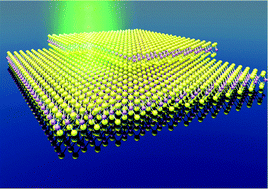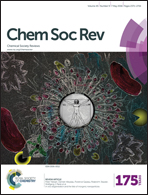Interactions between lasers and two-dimensional transition metal dichalcogenides
Abstract
The recent increasing research interest in two-dimensional (2D) layered materials has led to an explosion of in the discovery of novel physical and chemical phenomena in these materials. Among the 2D family, group-VI transition metal dichalcogenides (TMDs), such as represented by MoS2 and WSe2, are remarkable semiconductors with sizable energy band gaps, which make the TMDs promising building blocks for new generation optoelectronics. On the other hand, the specificity and tunability of the band gaps can generate particularly strong light–matter interactions between TMD crystals and specific photons, which can trigger complex and interesting phenomena such as photo-scattering, photo-excitation, photo-destruction, photo-physical modification, photochemical reaction and photo-oxidation. Herein, we provide an overview of the phenomena explained by various interactions between lasers and the 2D TMDs. Characterizations of the optical fundamentals of the TMDs via laser spectroscopies are reviewed. Subsequently, photoelectric conversion devices enabled by laser excitation and the functionality extension and performance improvement of the TMDs materials via laser modification are comprehensively summarized. Finally, we conclude the review by discussing the prospects for further development in this research area.


 Please wait while we load your content...
Please wait while we load your content...